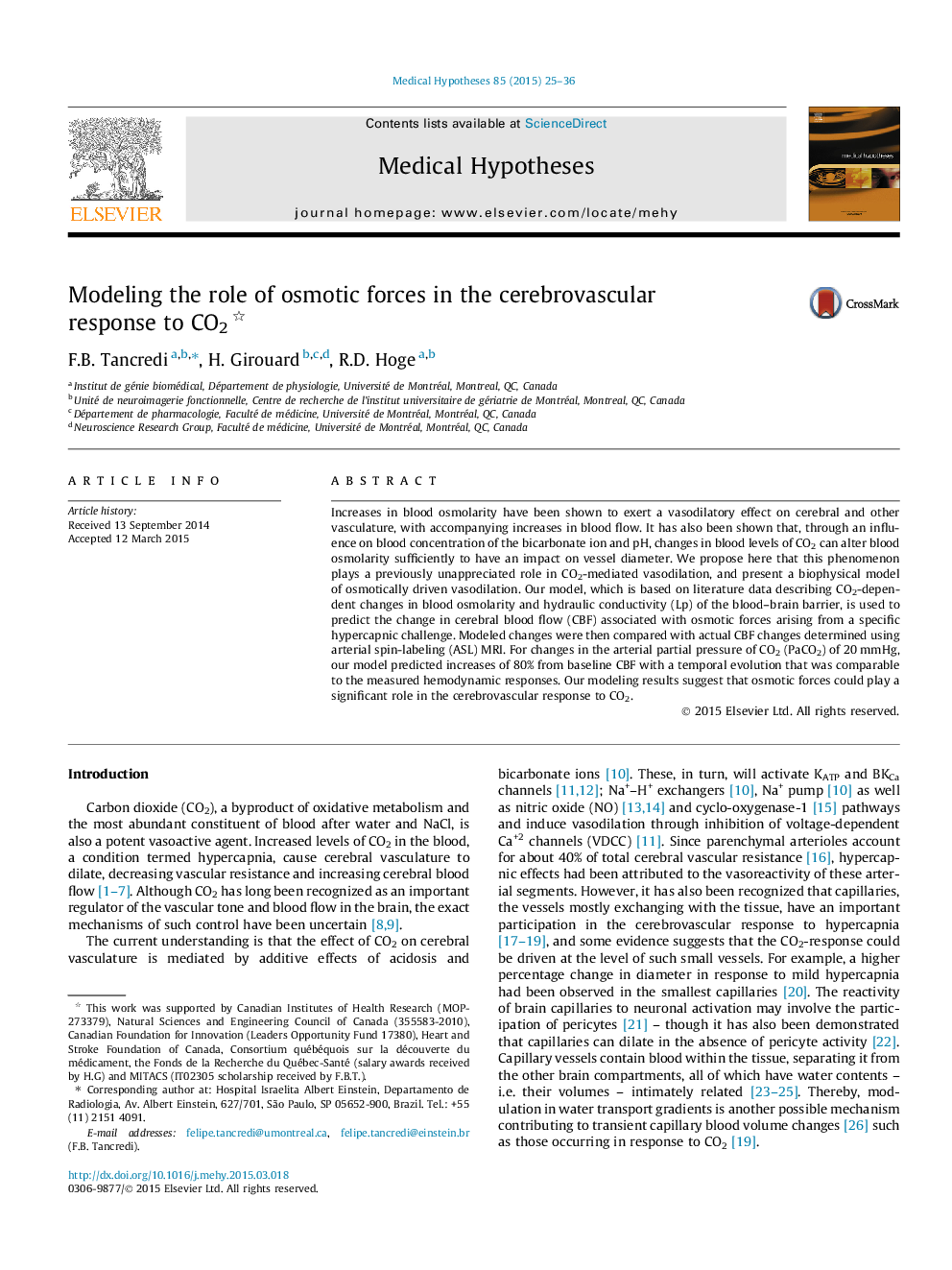| Article ID | Journal | Published Year | Pages | File Type |
|---|---|---|---|---|
| 5810583 | Medical Hypotheses | 2015 | 12 Pages |
Increases in blood osmolarity have been shown to exert a vasodilatory effect on cerebral and other vasculature, with accompanying increases in blood flow. It has also been shown that, through an influence on blood concentration of the bicarbonate ion and pH, changes in blood levels of CO2 can alter blood osmolarity sufficiently to have an impact on vessel diameter. We propose here that this phenomenon plays a previously unappreciated role in CO2-mediated vasodilation, and present a biophysical model of osmotically driven vasodilation. Our model, which is based on literature data describing CO2-dependent changes in blood osmolarity and hydraulic conductivity (Lp) of the blood-brain barrier, is used to predict the change in cerebral blood flow (CBF) associated with osmotic forces arising from a specific hypercapnic challenge. Modeled changes were then compared with actual CBF changes determined using arterial spin-labeling (ASL) MRI. For changes in the arterial partial pressure of CO2 (PaCO2) of 20Â mmHg, our model predicted increases of 80% from baseline CBF with a temporal evolution that was comparable to the measured hemodynamic responses. Our modeling results suggest that osmotic forces could play a significant role in the cerebrovascular response to CO2.
